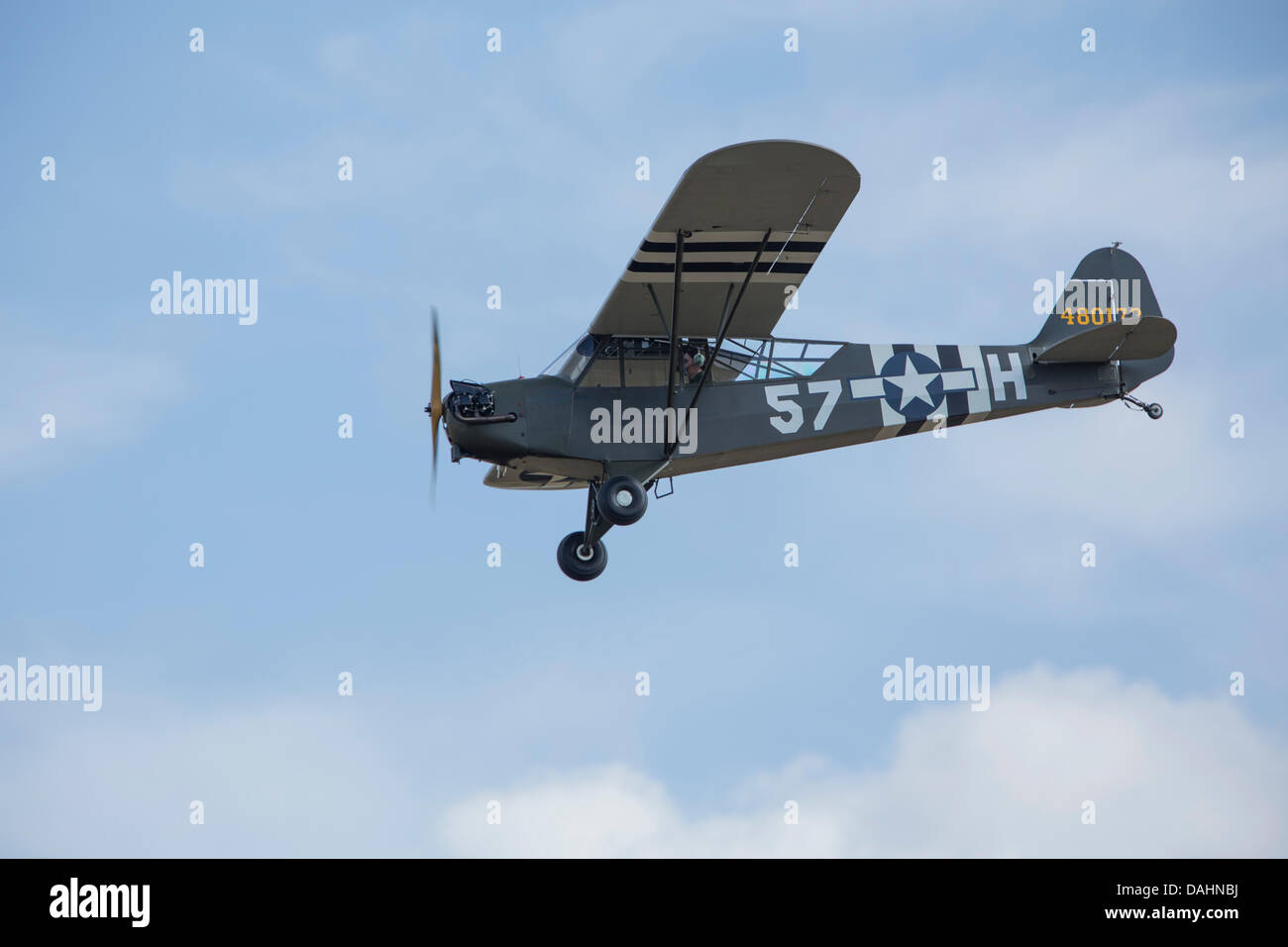Duxford, UK. 13th July, 2013. Piper Cub L4J in the markings of an artillery co-opertion aircraft during the Battle of Normandy Credit: Niall Ferguson/Alamy Live News

Image details
Contributor:
Niall Ferguson / Alamy Stock PhotoImage ID:
DAHNBJFile size:
63.3 MB (744.4 KB Compressed download)Releases:
Model - no | Property - noDo I need a release?Dimensions:
5760 x 3840 px | 48.8 x 32.5 cm | 19.2 x 12.8 inches | 300dpiDate taken:
13 July 2013Location:
Duxford Cambridge United KingdomMore information:
This image could have imperfections as it’s either historical or reportage.
The Taylor E-2 Cub first appeared in 1930, built by Taylor Aircraft in Bradford, Pennsylvania. The Piper Cub quickly became a familiar sight. First Lady Eleanor Roosevelt took a flight in a J-3 Cub, posing for a series of publicity photos to help promote the CPTP. Piper developed a military variant ("All we had to do, " Bill Jr. is quoted as saying, "was paint the Cub olive drab to produce a military airplane"), variously designated as the O-59 (1941), L-4 (after April 1942), and NE (U.S. Navy). The L-4 Grasshopper was mechanically identical to the J-3 civilian Cub, but was distinguishable by the use of a Plexiglas greenhouse skylight and rear windows for improved visibility, much like the Taylorcraft L-2 and Aeronca L-3 also in use with the US armed forces. Carrying a single pilot and no passenger, the L-4 had a top speed of 85 mph (137 km/h), a cruise speed of 75 mph (121 km/h), a service ceiling of 12, 000 ft (3, 658 m), a stall speed of 38 mph (61 km/h), an endurance of three hours, and a range of 225 mi (362 km).[ 5, 413 L-4s were produced for U.S. forces, including 250 built for the U.S. Navy under contract as the NE-1 and NE-2. All L-4 models, as well as similar, tandem-cockpit accommodation aircraft from Aeronca and Taylorcraft, were collectively nicknamed “Grasshoppers”, though the L-4 was almost universally referred to by its civilian designation of Cub. The L-4 was used extensively in World War II for reconnaissance, transporting supplies, artillery spotting duties, and medical evacuation of wounded soldiers. During the Allied invasion of France in June 1944, the L-4's slow cruising speed and low-level manueverability made it an ideal observation platform for spotting hidden German tanks waiting in ambush in the hedgerowed bocage country south of the invasion beaches. For these operations the pilot generally carried both an observer/radio operator and a 25-pound communications radio, a load that often exceeded the plane's specified weight capacity